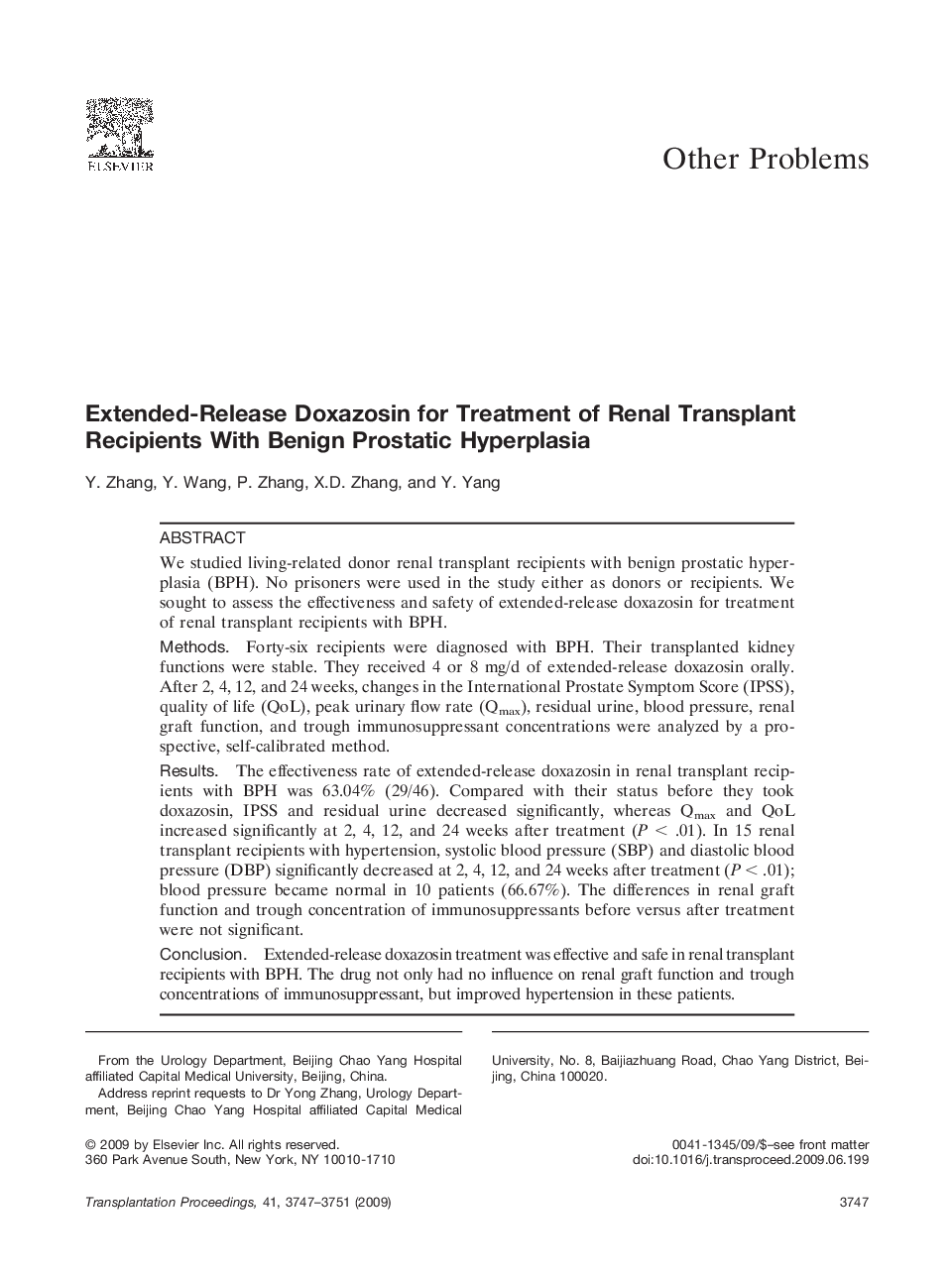| Article ID | Journal | Published Year | Pages | File Type |
|---|---|---|---|---|
| 4261235 | Transplantation Proceedings | 2009 | 5 Pages |
We studied living-related donor renal transplant recipients with benign prostatic hyperplasia (BPH). No prisoners were used in the study either as donors or recipients. We sought to assess the effectiveness and safety of extended-release doxazosin for treatment of renal transplant recipients with BPH.MethodsForty-six recipients were diagnosed with BPH. Their transplanted kidney functions were stable. They received 4 or 8 mg/d of extended-release doxazosin orally. After 2, 4, 12, and 24 weeks, changes in the International Prostate Symptom Score (IPSS), quality of life (QoL), peak urinary flow rate (Qmax), residual urine, blood pressure, renal graft function, and trough immunosuppressant concentrations were analyzed by a prospective, self-calibrated method.ResultsThe effectiveness rate of extended-release doxazosin in renal transplant recipients with BPH was 63.04% (29/46). Compared with their status before they took doxazosin, IPSS and residual urine decreased significantly, whereas Qmax and QoL increased significantly at 2, 4, 12, and 24 weeks after treatment (P < .01). In 15 renal transplant recipients with hypertension, systolic blood pressure (SBP) and diastolic blood pressure (DBP) significantly decreased at 2, 4, 12, and 24 weeks after treatment (P < .01); blood pressure became normal in 10 patients (66.67%). The differences in renal graft function and trough concentration of immunosuppressants before versus after treatment were not significant.ConclusionExtended-release doxazosin treatment was effective and safe in renal transplant recipients with BPH. The drug not only had no influence on renal graft function and trough concentrations of immunosuppressant, but improved hypertension in these patients.
